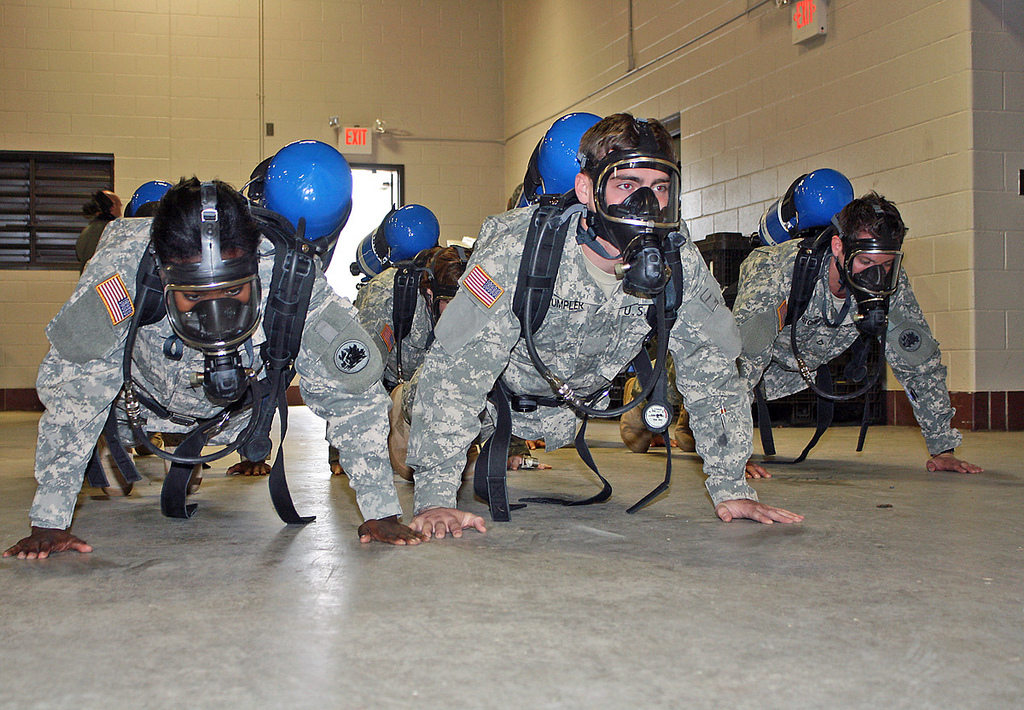

Topic Objective
Develop and demonstrate a material solution to provide adaptive, scalable, cost effective training and testing to improve the Command, Control, Communication, Computers, Cyber, Intelligence, Surveillance and Reconnaissance (C5ISR) system operations for the Army’s Signal Soldiers.
Description
The desired solution at completion will significantly improve (or revolutionize) the network systems training and testing (TT) for the Warfighters, and enable the adaptive, scalable and cost-effective TT to keep pace with the rapid advance of the technology. The solution will address planning, installing, operating, and maintaining techniques, tactics, and procedures (TTPs) in the area of NetOps as well as the test and evaluation (T&E) on the hardware (HW) and software (SW) and other human machine interface (HMI) functions. The solution will provide immersive 3D simulated tactical network systems, address both individual and collective tasks as well as a variety of common challenging scenarios faced by the Warfighters to enable warfighters to be trained and use the latest HW/SW in the simulated operational environment. The solution will use a Modular Open Systems Architecture (MOSA) to enable integration of 3rd party vendors and Original Equipment Manufacturers (OEMs) to produce software modules for their respective network systems. The desired solution will enable users to set battle space scenarios, training collaboration between multiple-users, training with the latest HW/SW packages just clicks away, assess the HW and SW capabilities and provide the near-real time operational feedbacks to improve the products, shorten the product development-testing-training-fielding cycles, and ultimately reduce the field support costs for training and fielding through reduction of field support engineers.
Phase I
The Phase One deliverable will be:
Phase II
Develop and demonstrate a prototype solution that can be executed by users at Soldier Touch Points for feedback back into the system. Phase Two deliverables will include:
Phase III
Develop and demonstrate a multiplayer C5ISR solution, demonstrate a solution that simulates scalable training and testing. Phase Three deliverables will include:
Submission Information
To submit full proposal packages, and for more information, visit the DSIP Portal.

References:
Coyle, Daniel. (2009, April 28). The Talent Code: Greatness Isn’t Born. It’s Grown. Here’s How. Random House Publishing Group, 2009.
Federico F. Bilotta, Samantha M. Werner, Sergio D. Bergese, and Giovanni Rosa. (2013, November 7). Impact and Implementation of Simulation-Based Training for Safety. https://www.hindawi.com/journals/tswj/2013/652956/
Kotler, Steven. (2014, March 4). The Rise of Superman: Decoding the Science of Ultimate Human Performance. HMH Books. TEDx.
TEDx Talks. (2018, May 7). The Power of Gamification in Education [Video]. YouTube. https://www.youtube.com/watch?v=mOssYTimQwM
Topic Objective
Develop and demonstrate a material solution to provide adaptive, scalable, cost effective training and testing to improve the Command, Control, Communication, Computers, Cyber, Intelligence, Surveillance and Reconnaissance (C5ISR) system operations for the Army’s Signal Soldiers.
Description
The desired solution at completion will significantly improve (or revolutionize) the network systems training and testing (TT) for the Warfighters, and enable the adaptive, scalable and cost-effective TT to keep pace with the rapid advance of the technology. The solution will address planning, installing, operating, and maintaining techniques, tactics, and procedures (TTPs) in the area of NetOps as well as the test and evaluation (T&E) on the hardware (HW) and software (SW) and other human machine interface (HMI) functions. The solution will provide immersive 3D simulated tactical network systems, address both individual and collective tasks as well as a variety of common challenging scenarios faced by the Warfighters to enable warfighters to be trained and use the latest HW/SW in the simulated operational environment. The solution will use a Modular Open Systems Architecture (MOSA) to enable integration of 3rd party vendors and Original Equipment Manufacturers (OEMs) to produce software modules for their respective network systems. The desired solution will enable users to set battle space scenarios, training collaboration between multiple-users, training with the latest HW/SW packages just clicks away, assess the HW and SW capabilities and provide the near-real time operational feedbacks to improve the products, shorten the product development-testing-training-fielding cycles, and ultimately reduce the field support costs for training and fielding through reduction of field support engineers.
Phase I
The Phase One deliverable will be:
Phase II
Develop and demonstrate a prototype solution that can be executed by users at Soldier Touch Points for feedback back into the system. Phase Two deliverables will include:
Phase III
Develop and demonstrate a multiplayer C5ISR solution, demonstrate a solution that simulates scalable training and testing. Phase Three deliverables will include:
Submission Information
To submit full proposal packages, and for more information, visit the DSIP Portal.
References:
Coyle, Daniel. (2009, April 28). The Talent Code: Greatness Isn’t Born. It’s Grown. Here’s How. Random House Publishing Group, 2009.
Federico F. Bilotta, Samantha M. Werner, Sergio D. Bergese, and Giovanni Rosa. (2013, November 7). Impact and Implementation of Simulation-Based Training for Safety. https://www.hindawi.com/journals/tswj/2013/652956/
Kotler, Steven. (2014, March 4). The Rise of Superman: Decoding the Science of Ultimate Human Performance. HMH Books. TEDx.
TEDx Talks. (2018, May 7). The Power of Gamification in Education [Video]. YouTube. https://www.youtube.com/watch?v=mOssYTimQwM
